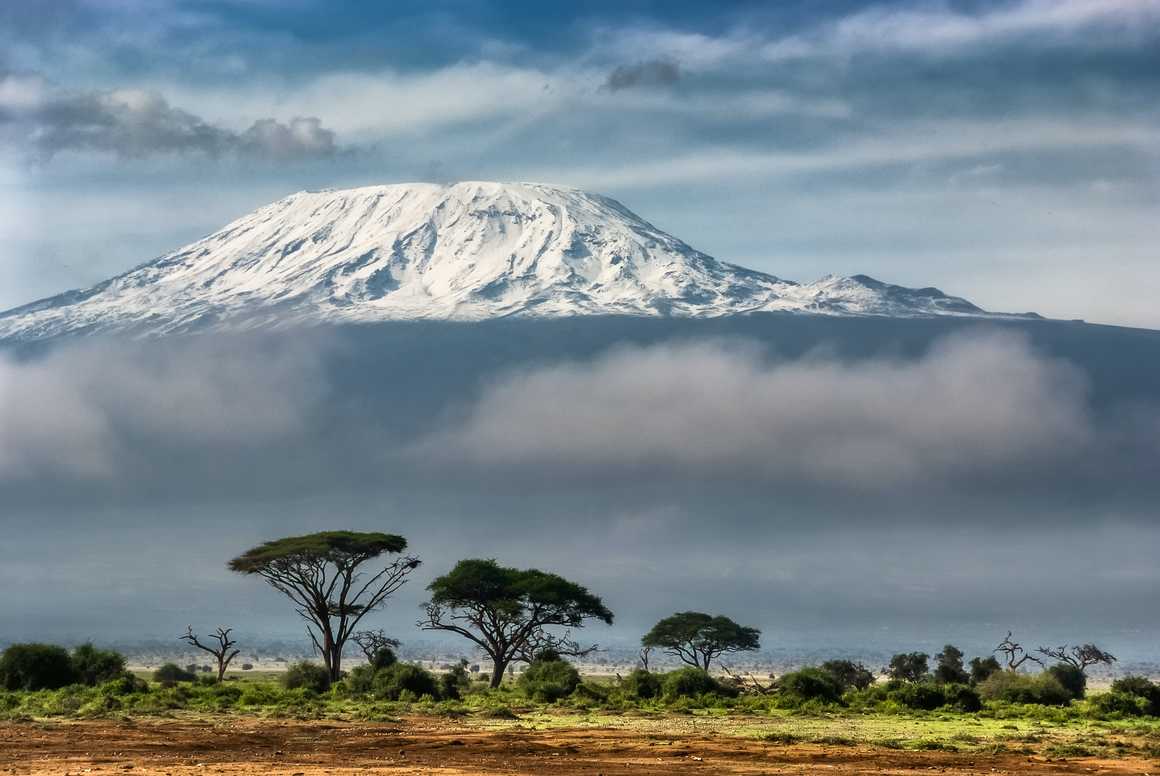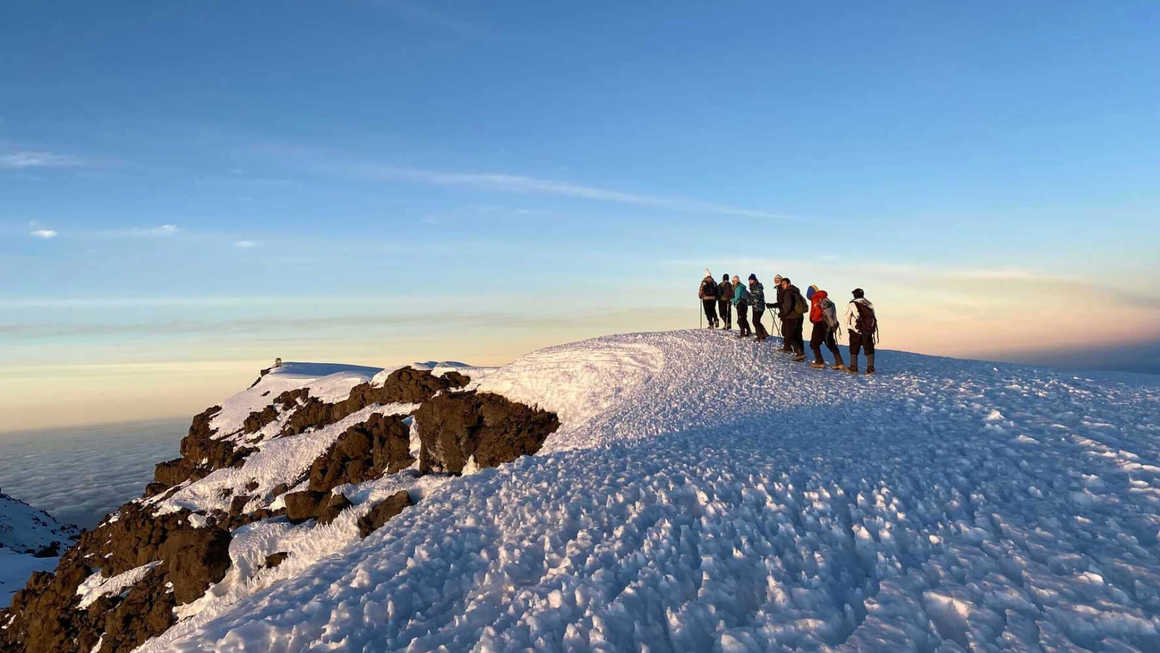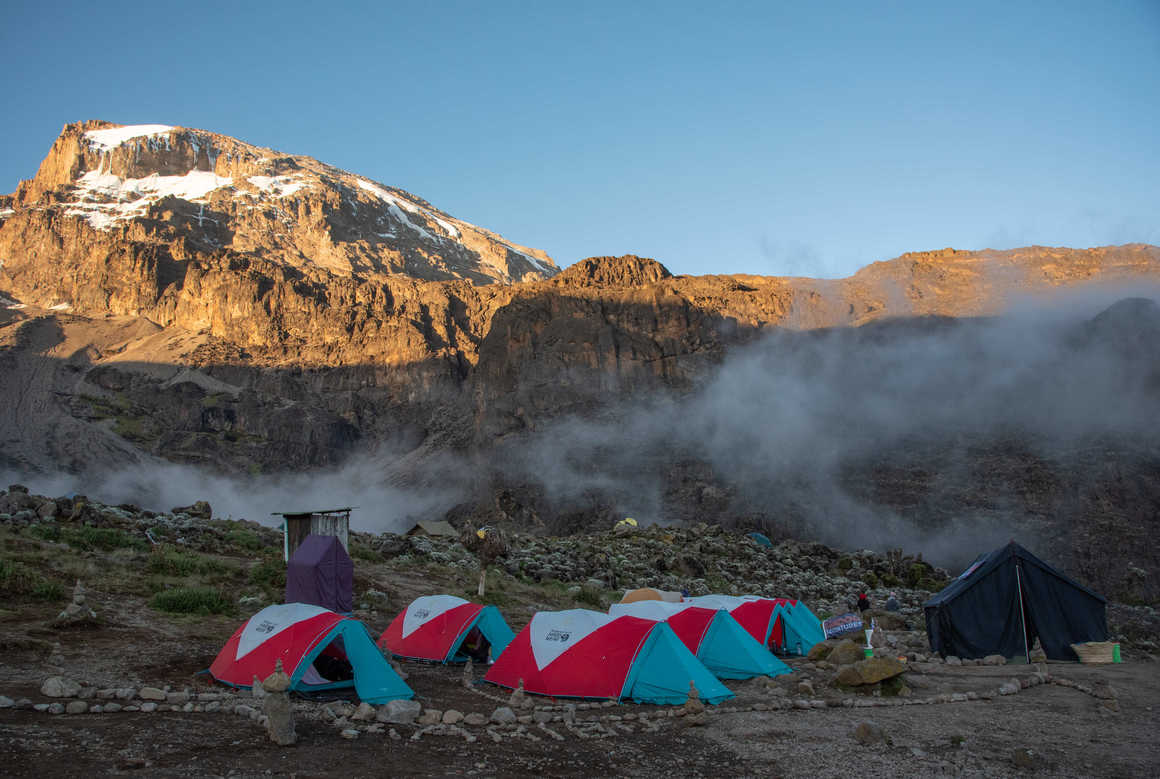Everything You Need to Know About Climbing Kilimanjaro
Over 30,000 people climb Kilimanjaro every year and this
awe-inspiring mountain tops the bucket list for many seasoned adventurers and less
experienced trekkers looking to conquer the tallest mountain in Africa and
tallest freestanding mountain in the world.
In this blog, we’ll navigate through the essentials for a
successful Kilimanjaro expedition. From finding the best route to climb
Kilimanjaro and the optimal time to embark on this epic adventure to preventing
altitude sickness when you’re on the mountain, we’ll delve into crucial details
and some of the most frequently asked questions from adventurers looking to
take on the challenge.
Gear up for the adventure of a lifetime with our Beginners
Guide to Kilimanjaro, providing you with the expertise and support needed to
make this journey an unforgettable triumph.

Where is Mt Kilimanjaro?
Most travellers
planning on climbing Kilimanjaro will spend the night in the town of Moshi,
which is a 45-minute drive away from the airport, before continuing to the
mountain. For more information and alternative routes, check out our blog on how
to get to Kilimanjaro.
How High is Kilimanjaro?
How Long Does It Take to Climb Kilimanjaro?
Our blog
post ‘How Long Does It Take to Climb Kilimanjaro’ provides a detailed
breakdown of the time it takes to climb Kilimanjaro on each of the 7 routes up
the mountain and aims to answer this frequently asked question about climbing
Kilimanjaro.
How Hard is It to Climb Kilimanjaro?
While you
won’t need technical equipment such as ropes, harnesses and helmets to climb
Kilimanjaro, you will certainly need a good level of fitness, determination and
a positive mindset. Essentially, the fitter you are, the easier and more
enjoyable you will find the trek and the stronger your mental resilience, the
more likely you are to successfully reach Kilimanjaro summit. At Kandoo
Adventures, we are strong believers that anyone with a good level of fitness
and determined spirit has a great chance of successfully reaching the summit of
Kilimanjaro and this is reflected by our success rate of over 95% on all our
trips to Kilimanjaro.

Which is the Best Route to Climb Kilimanjaro?
As a rule,
the longer you spend on Kilimanjaro, the more likely you are to reach the
summit successfully because you will become more acclimatised to the altitude, and
you will be less fatigued. In terms of the Kilimanjaro route with the highest
summit success rate, the Machame Route tops all other trails to the
summit. This is due to the time dedicated to acclimatisation.
When is the Best Time to Climb Kilimanjaro?
Does Kilimanjaro Require Technical Climbing?
Can you climb Kilimanjaro Without a Guide?

How Cold Does It Get on Kilimanjaro?
At the base
of the mountain, the average temperature is around 21 to 27°C or 70 to 80
degrees Fahrenheit and at the summit of Kilimanjaro, Uhuru Peak, the nighttime
temperatures can range between -7 to -29°C or 20 and -20 degrees Fahrenheit.
Please read our Kilimanjaro gear list for more information as it is
essential that you come prepared for these subzero temperatures.
What Do You Eat When Climbing Kilimanjaro?
Breakfast
is usually fairly hearty and includes porridge, sausage, eggs and toast with
marmalade or jam. Lunch is either packed for you to carry in your rucksack or
we stop for a hot cooked lunch depending on your itinerary. A typical packed
lunch is a boiled egg, sandwiches, a portion of chicken, crisps, snack bar,
fresh fruit and a drink. Dinners usually begin with a nice hearty soup followed
by a main course such as chicken curry, spaghetti Bolognese, fresh vegetables
and a yummy desert such as pancakes or banana fritters to finish.
You will
also be given 3 litres of water daily on your Kilimanjaro climb and there will
be unlimited amounts of hot drinks at breakfast and dinner. Drinking plenty of
water is even more important than eating when climbing Kilimanjaro.
Are There Toilet and Shower Facilities on Kilimanjaro?
The second
option is the ‘portable private loo’ which is exclusive for the use of you and
your group only. It consists of a portable chemical toilet (with a seat) and a
discreet tent for privacy. At Kandoo Adventures, the use of a portable private
toilet is included as standard with every one of our climbs.
To answer
the latter part of the question, there are no permanent showers or bathing
facilities on Kilimanjaro. Hygiene on Kilimanjaro is limited to water and any
sort of wipes or cloths that you bring so you’ll just have to do without a
shower while climbing Kilimanjaro and embrace the body odour for the time
being. Don’t worry though, everyone on the mountain is in the same position!

How Much Does It Cost to Climb Kilimanjaro?
Flights are
another of the big cost factors when climbing Kilimanjaro. All Kandoo
Adventure’s Kilimanjaro trips require trekkers to organise their own flights to
Kilimanjaro International Airport (JRO). You should budget at least £900-£1,300
($1,135-$1,639) for flights but this will vary depending on the time of year,
your departure airport and how far ahead you book.
Clothing
layers are important, as is a good sleeping bag and quality pair of trekking
boots. We recommend a budget of £400 ($504) for clothes, equipment and kit
although this will be considerably less depending on how much gear you already
own.
If you are
a foreigner to Tanzania, then you will need a visa to enter the country. Visas
can either be purchased prior to your trip online or upon arrival at
Kilimanjaro airport. Both British and US citizens can apply for a tourist via
online and it can take up to 10 days to process. For ease, we suggest
purchasing a visa prior to travelling as you will avoid the long queues at
Kilimanjaro airport. Visas cost £79.99 from the UK and $99 from the USA. We
also recommend getting Yellow Fever and Hep-A vaccinations as well as a Polio
Tetanus Diphtheria booster although they are not mandatory.
Finally,
tipping your porters is a standard practice on Kilimanjaro. The average
tipping amount per person per trek is roughly £150 - £170 ($189-$214) depending
on group size.
- Kilimanjaro Lemosho Route – £2,699 ($3,440)
- Kilimanjaro Lemosho Climb and Safari –
£3,949 ($4,935)
- Kilimanjaro Lemosho Route with Crater Camp –
£3,299 ($4,160)
- Kilimanjaro Machame Route – £2,449
($3,120)
- Kilimanjaro Machame Climb and Safari –
£3,249 ($4,025)
- Kilimanjaro Machame Route with Crater Camp –
£3,099 ($3,908)
- Kilimanjaro Rongai Route – £2,549 ($3,315)
- Kilimanjaro Marangu Route – £2,099 ($2,725)
- Kilimanjaro Northern Circuit – £3,099 ($3,908)
- Kilimanjaro Northern Circuit with Crater Camp – £3,599 ($4,539)










